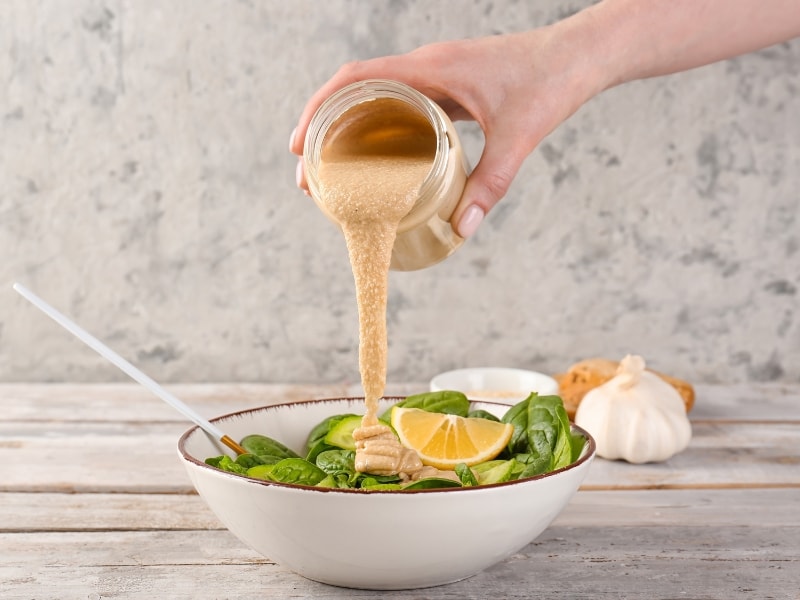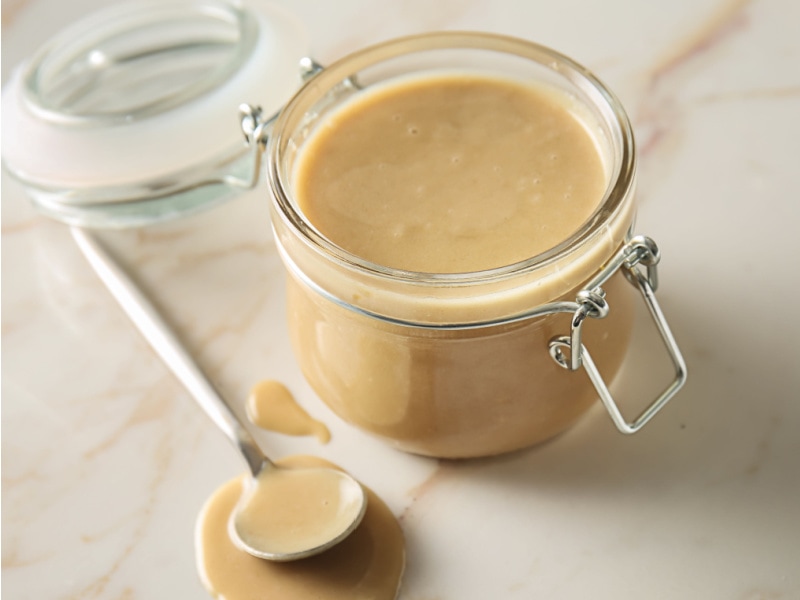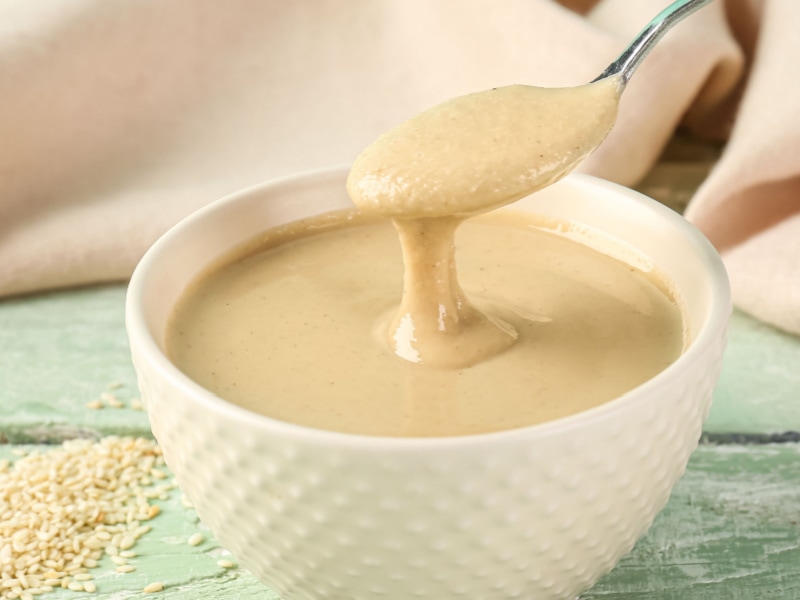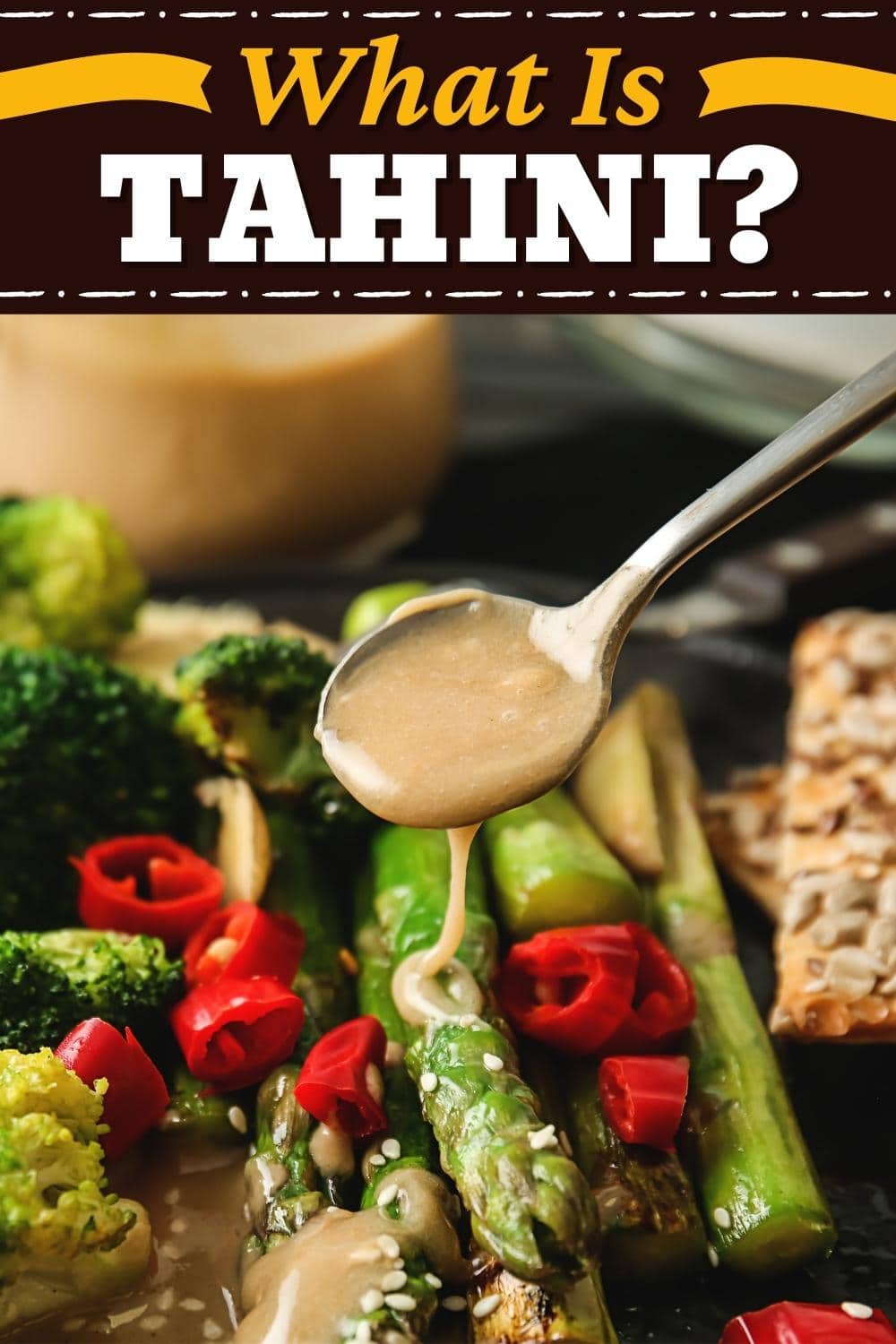If you’ve ever enjoyed a hearty hummus dip, chances are you’ve come across tahini. But what is tahini, and why has it become a staple in many kitchens?
Let’s explore everything you need to know about tahini.
From its origins to its culinary use, you’ll learn all about this incredible ingredient.

And did you know you can make tahini at home with just three ingredients? Yes, you read that right!
Best of all, you’ll discover some of the many ways you can use it in cooking.
What are you waiting for? Read on and prepare to appreciate the unique flavor of tahini.
What is Tahini?
Tahini is a paste made from ground sesame seeds that are turned into a paste.
It’s a staple in Middle Eastern and Mediterranean cuisines that grew popularity worldwide.
Tahini has been used for centuries in dishes like hummus, baba ghanoush, and falafel.
Tahini is rich in nutrients like protein, fiber, and healthy fats.
To make tahini, sesame seeds are roasted and then ground into a creamy paste.
Some recipes call for the addition of oil, salt, or other ingredients.
But traditional tahini is simply sesame seeds and water.
The consistency can vary depending on the brand and recipe.
It’s typically smooth and thick, with a texture similar to natural peanut butter.
Tahini has a rich, earthy flavor and a creamy consistency. It can be a dip, spread, or base for sauces and dressings.
And the best part? You can also incorporate tahini to enhance sweet treats and make savory dishes.

What Does Tahini Taste Like?
Tahini has a strong earthy, slightly bitter taste with a creamy and slightly oily texture.
The flavor can vary depending on the brand and the method of preparation.
Generally, tahini has a distinct nutty taste without hints of sweetness compared to other nut butter.
The bitterness can also vary. Unhulled tahini tends to be more bitter than hulled ones.
Tahini made from hulled sesame seeds has a milder flavor and longer shelf life.
You can enhance the taste of tahini by adding other ingredients like salt, garlic, or olive oil.
These ingredients help balance the bitterness and bring out the nutty and savory flavors.
Overall, tahini is a versatile ingredient that adds depth and richness to various dishes.
How to Make Tahini
While it’s readily available in grocery stores, making tahini at home is simple. Plus, it can be a fun project to try out!
Step 1: Toast the Sesame Seeds
The first step in making tahini is to toast the sesame seeds.
This step is important because it brings out the nutty flavor of tahini.
Place the tahini on a dry skillet over medium heat to toast the sesame seeds.
Gently stir the tahini for 5 minutes or until they’re lightly colored and fragrant.
Alternatively, you can toast the sesame seeds in the oven.
Spread the sesame seeds in a single layer on a lined baking tray. Bake them in a preheated oven at 350°F for 5 minutes.
Be sure to stir the seeds occasionally to ensure they are evenly toasted.
Step 2: Grind the Sesame Seeds
Once the sesame seeds are toasted, ground them into a thick paste.
You can use a food processor, blender, or mortar and pestle to do this.
Simply grind the sesame seeds until they form a crumbly paste.
If you use mortar and pestle, be sure to grind the seeds in small batches.
Step 3: Add Oil
To make the tahini smoother and creamier, you need to add some oil.
You can use any oil you prefer, such as olive or vegetable oil.
Start by adding two tablespoons of oil to 1 cup of sesame seeds. Process until it’s smooth and creamy.
If the tahini is still too thick, add more oil.
Be sure only to add one tablespoon at a time until you reach the desired consistency.
Step 4: Add salt (Optional)
If you want to enhance the flavor of your tahini, you can add salt.
It helps balance the bitterness and highlights the nutty flavor of tahini.
Start by adding a small amount of seasoning and mix well.
Taste the tahini and adjust the taste depending on your preference.
Step 5: Store and Use
Once your tahini is ready, transfer it to a jar or container with a tight-fitting lid.
You can store tahini in the refrigerator for up to a month.
To use the tahini, simply scoop out the desired amount and use it in your favorite recipes.

How to Use Tahini?
Tahini is a versatile ingredient used in various sweet and savory recipes.
Its rich, earthy flavor and creamy texture make it a popular addition to many dishes.
There are endless possibilities when it comes to using tahini.
Experiment with different recipes and see how to incorporate this delicious ingredient into your cooking.
Whether you’re a fan of sweet or savory flavors, it’ll add a tasty twist to your meals.
Dips and sauces: Dive into the rich flavors of tahini with raw vegetables or pita bread. You can also spruce up your meals by drizzling them over grilled or roasted dishes.
Salad dressing: A tahini-based salad dressing brings a creamy, rich flavor profile to veggies, bowls, and falafel.
Baba ghanoush: Make this smoky eggplant dip by blending roasted eggplant with tahini, lemon juice, garlic, and seasonings
Stir-fries: Add tahini to stir-fry sauces for an extra layer of flavor and creaminess.
Noodles: Combine tahini with soy sauce, honey, and lemon juice to coat the tender noodles with richness.
Soup: Swirl tahini into soups like tomato or butternut squash for added depth.
Smoothies: Add a spoonful of tahini to your smoothies for a boost of flavor, creaminess, and nutrients.
Desserts: Incorporate tahini into desserts like cookies, brownies, or muffins for a richer-tasting treat.
How to Store Tahini?
Homemade tahini can stay fresh in the refrigerator for months.
Transfer the tahini into a clean, dry air-tight container with a tight-fitting lid.
If you notice the oil separating, simply give it a good stir before using it.
If the tahini becomes too thick from storage, thin it out with little water or oil.
Watch the tahini for signs of spoilage. It may turn rancid and change in texture.
If you notice any of these signs, it’s best to discard the tahini and make a fresh batch.

Tahini Substitutes
Don’t have tahini? Or need an alternative because of allergies or food preferences? Don’t fret!
Here are some substitutes for tahini you can use to make your favorite dishes:
Almond butter: This nut butter has a creamy texture and deep nutty flavor similar to tahini. Keep in mind, though, that almond butter has a sweeter taste.
Cashew butter: Another nut butter option, cashew butter, has a milder flavor and creamy texture.
Peanut butter: Although mild with subtle sweetness, peanut butter works great as a tahini substitute. Be sure to use natural and unsweetened kinds for the best results.
Sesame oil or seeds: If you’re making hummus, use sesame oil or seeds to capture the similar flavor depth of tahini.
When substituting tahini in a recipe, consider the flavor profile of the alternative.
You might need to adjust other ingredients or seasonings to balance the flavors.










